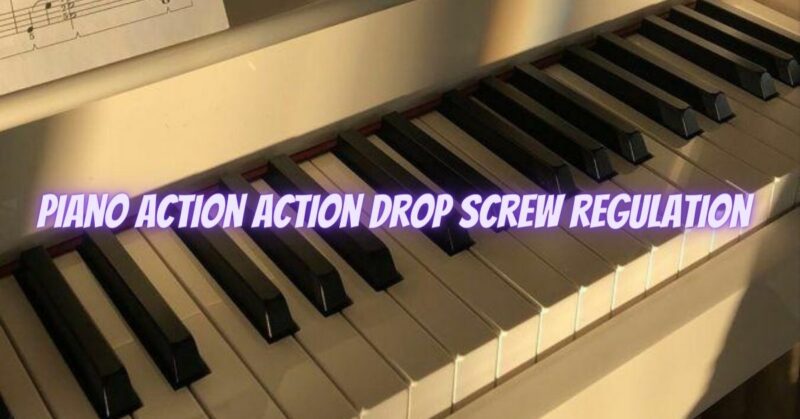The piano action drop screw regulation is a crucial process in piano maintenance that involves adjusting the key dip, which is the distance the key travels when pressed down. Proper key dip adjustment ensures optimal playability, responsiveness, and control of the piano’s touch. In this article, we will explore the piano action drop screw regulation process and its importance in enhancing the overall performance of the instrument.
Understanding Key Dip: Key dip is the distance a piano key travels from its resting position to the bottom when fully depressed. This distance affects the amount of energy required to play the keys and the responsiveness of the piano’s action. Too shallow key dip may result in a stiff and unresponsive touch, while excessive key dip can cause sluggishness and fatigue for the player. Finding the right balance is essential to achieve a comfortable and enjoyable playing experience.
Piano Action Drop Screw Regulation: The piano action drop screw regulation involves adjusting the drop screws found in the piano action mechanism. These screws control the height of the piano hammers when at rest, thereby influencing the key dip. Technicians can adjust the drop screws to increase or decrease the key dip based on the desired touch and playing preferences.
The Regulation Process:
- Inspection: A skilled piano technician will begin by inspecting the action mechanism and determining the current key dip. They will evaluate the piano’s overall playability and assess whether the key dip needs adjustment.
- Adjustment: To increase the key dip, the technician will turn the drop screws clockwise, allowing the hammers to rest higher when the keys are not depressed. This results in a deeper key dip and a lighter touch. Conversely, to decrease the key dip, the technician will turn the drop screws counterclockwise, lowering the resting position of the hammers.
- Fine-Tuning: After making the initial adjustments, the technician will test the piano’s touch and responsiveness. They may fine-tune the key dip further to achieve the ideal balance of touchweight and key travel for each individual key.
- Action Regulation: The drop screw regulation is often part of a comprehensive action regulation process, which involves adjusting various components of the piano action to optimize performance. The technician may also address other action-related issues, such as escapement, let-off, and repetition.
Importance of Piano Action Drop Screw Regulation: Proper piano action drop screw regulation is essential for several reasons:
- Playability: A well-regulated key dip ensures that the piano is easy to play, promoting better control and expression for the pianist.
- Comfort: An optimal key dip reduces fatigue during extended playing sessions, allowing pianists to perform with ease and comfort.
- Responsive Touch: Adjusting the key dip improves the action’s responsiveness, allowing for quicker repetition and enhanced dynamic control.
- Customization: The key dip can be tailored to suit the preferences of individual pianists, providing a personalized playing experience.
Seeking Professional Assistance: Piano action drop screw regulation requires technical expertise and precision. Attempting to adjust the drop screws without proper knowledge and tools can lead to damage or affect the piano’s playability negatively. It is essential to consult a qualified piano technician for this delicate process.
Conclusion: The piano action drop screw regulation is a crucial step in piano maintenance that significantly impacts playability and performance. A skilled technician can adjust the key dip to achieve the perfect balance of touch and responsiveness, providing pianists with a rewarding playing experience and allowing the piano to reach its full musical potential. Regular action regulation, including key dip adjustments, will help maintain your piano in excellent condition and ensure many years of musical enjoyment.


